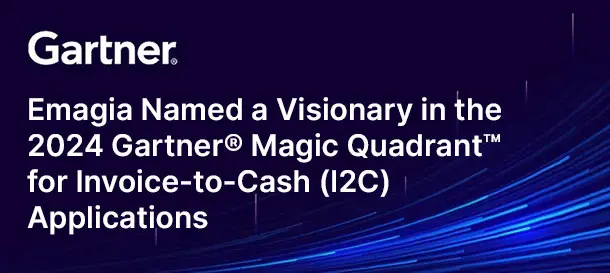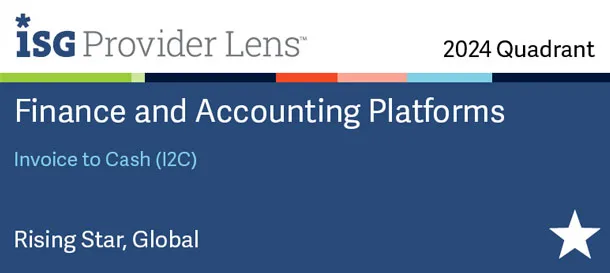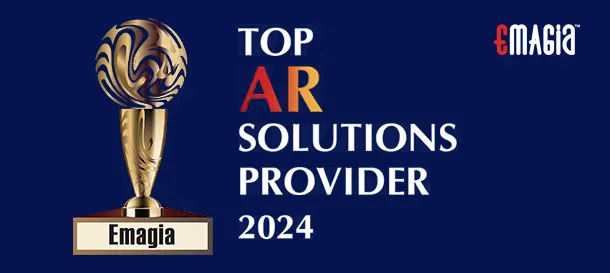Credit risk management in order-to-cash is the cornerstone of modern financial health for businesses. It involves assessing the likelihood that a customer will fail to pay for products or services within agreed terms. Effective O2C credit management protects cash flow, reduces bad debt, and builds sustainable customer relationships.
Introduction to Credit Risk in Order-to-Cash
The Order-to-Cash (O2C) process represents the full cycle of business transactions from order placement to cash collection. Credit risk management embedded within this process ensures that companies only extend credit where it is safe and profitable.
By integrating risk management strategies, businesses mitigate the dangers of late payments, insolvencies, and cash flow disruption.
Why Credit Risk Management Matters
Without robust credit risk practices, companies face a domino effect of financial problems. Late payments can erode cash reserves, cause operational delays, and affect supplier payments. This, in turn, damages business reputation and stakeholder trust.
Credit risk management safeguards profitability, supports sustainable growth, and enables effective resource allocation.
The O2C Process and Risk Points
- Credit Evaluation: Determining customer creditworthiness before order approval.
- Order Management: Ensuring orders align with credit policies.
- Invoice Creation: Accurate invoicing to prevent disputes.
- Payment Collection: Monitoring payment compliance.
- Reconciliation: Matching payments to invoices accurately and promptly.
Core Principles of Credit Risk Management in O2C
Customer Credit Evaluation O2C
Evaluating a customer’s credit involves analyzing financial statements, credit history, payment patterns, and industry risks. Modern O2C credit management uses automated credit assessments for accuracy and speed.
Risk-Based Credit Decisions
Credit risk in O2C should not be one-size-fits-all. Instead, it should be tailored based on the customer’s financial health, order size, payment history, and industry context.
Credit Scoring Models in O2C
Credit scoring models quantify risk using data-driven algorithms. These models factor in payment history, outstanding balances, and macroeconomic indicators to produce a credit score for each customer.
The Role of Technology in Credit Risk Management
AI-Driven Credit Risk Assessment
AI tools can analyze vast datasets to predict the probability of late or missed payments. These tools integrate into O2C systems, offering real-time credit scores and risk alerts.
Predictive Analytics for Credit
Predictive analytics uses historical payment patterns and macroeconomic data to forecast risk trends. This enables proactive decision-making, reducing DSO and bad debt.
ERP Integration for Credit Management
ERP systems integrated with credit risk modules allow seamless credit evaluation and policy enforcement at the point of order entry, ensuring compliance and reducing delays.
Strategies to Build a Strong Credit Risk Framework
Establishing Clear Credit Policies
Transparent credit policies ensure consistency and reduce misunderstandings with customers. These should define payment terms, credit limits, risk thresholds, and escalation protocols.
Automated Credit Approvals
Automation speeds up credit approvals while maintaining accuracy. This allows sales teams to process orders without manual delays, improving customer satisfaction.
Continuous Monitoring and Adjustment
Credit risk is not static. Regular monitoring of customer financial health and payment behavior ensures that credit limits and terms remain relevant.
Benefits of Effective Credit Risk Management in O2C
- Reduced bad debt and improved cash flow.
- Shortened DSO and faster liquidity.
- Increased customer trust and long-term relationships.
- Enhanced operational efficiency through automation.
Case Example — Manufacturing Sector
A global manufacturing firm implemented automated credit scoring and monitoring in their O2C process. This allowed them to reduce DSO by 20%, minimize disputes, and improve cash flow forecasting.
Case Example — Retail Sector
A retail company integrated predictive analytics for credit, resulting in faster approvals and a 15% reduction in overdue invoices within six months.
Advanced Credit Risk Management Tools in O2C
Modern O2C teams leverage sophisticated tools that combine data analytics, AI, automation, and integration capabilities to streamline credit risk management. These tools improve accuracy, reduce decision time, and optimize collections.
AI-Driven Credit Scoring Models
AI-powered credit scoring models are capable of analyzing vast datasets including customer payment history, industry trends, financial statements, and macroeconomic indicators. These models provide real-time scoring that guides credit approval decisions and risk mitigation strategies.
Key Features of AI Credit Scoring
- Real-time risk scoring and credit limit suggestions.
- Automated updates based on new data.
- Integration with ERP and O2C workflows.
- Machine learning to continuously improve scoring accuracy.
Predictive Analytics for Credit Risk
Predictive analytics uses historical data to anticipate potential payment delays or defaults. This enables proactive action, such as adjusting payment terms, initiating collections earlier, or requesting guarantees before shipment.
Benefits of Predictive Analytics in O2C
- Early identification of high-risk accounts.
- Optimized credit limits and terms.
- Improved cash flow forecasting.
- Data-driven prioritization of collections activities.
Cloud-Based Credit Risk Dashboards
Cloud-based dashboards give credit managers a real-time view of customer credit profiles, outstanding receivables, risk trends, and compliance metrics. These dashboards are customizable and accessible across devices for informed decision-making.
Advantages of Cloud Credit Dashboards
- Centralized access to credit data.
- Real-time updates on credit risk changes.
- Enhanced reporting for strategic decisions.
Integrating AI into Credit Risk Management
AI integration transforms credit risk management from a manual, reactive process into a proactive, automated one.
Machine Learning for Predictive Credit Decisions
Machine learning algorithms learn from historical credit performance to identify patterns and predict risk levels more accurately than traditional methods. Over time, these systems adapt to changing market conditions and customer behaviors.
Automation in Credit Risk Processes
Automation streamlines repetitive tasks such as credit checks, limit updates, risk reporting, and compliance tracking. This reduces human error and allows credit teams to focus on high-value activities such as dispute resolution and strategic risk mitigation.
Real-Time Credit Risk Alerts
AI systems provide real-time alerts for changes in customer creditworthiness, enabling businesses to act immediately before risk escalates. Alerts can be based on payment delays, financial statement changes, market trends, or unusual payment behavior.
Credit Compliance and Risk Governance
Credit risk management in O2C must comply with regulatory frameworks and internal governance standards. This ensures accountability and protects the organization from legal and financial repercussions.
Compliance Challenges in O2C Credit Management
Organizations face several compliance challenges including:
- Data privacy regulations.
- Multi-currency and international credit policies.
- Industry-specific credit compliance requirements.
Strategies for Compliance
- Automated compliance checks in credit workflows.
- Regular audits of credit policies and processes.
- Documentation and reporting for regulatory purposes.
Case Studies — Real World Applications of Credit Risk Management
Case Study — Global Manufacturing Firm
A manufacturing firm integrated AI-driven credit scoring into its O2C process, reducing Days Sales Outstanding (DSO) by 22% and lowering bad debt by 18% in the first year. Automated alerts helped proactively adjust credit limits for at-risk accounts.
Case Study — Retail Enterprise
A major retail chain adopted cloud-based credit dashboards and automated credit approval processes. As a result, credit assessment times dropped by 50% and overdue receivables reduced by 25% within six months.
Case Study — B2B Services Provider
A B2B services company implemented predictive analytics to monitor payment behavior. They optimized their credit policies, resulting in a 30% improvement in collection efficiency and improved customer relationships.
How Emagia Transforms Credit Risk Management in Order-to-Cash
Emagia offers a comprehensive suite of tools designed specifically to address the challenges of credit risk management in the Order-to-Cash process. By integrating AI-driven credit scoring, automated compliance checks, and real-time analytics, Emagia enables businesses to make smarter, faster, and more confident decisions.
AI-Powered Credit Risk Assessment
Emagia’s AI engine continuously analyzes customer payment behavior, historical credit data, and external market factors to produce real-time credit risk scores. This allows companies to dynamically adjust credit limits and payment terms to protect cash flow.
Automated Credit Approvals
With Emagia, credit approvals are streamlined using customizable workflows. Automation eliminates bottlenecks, ensures compliance with corporate policies, and accelerates the O2C cycle, enabling sales teams to work without delay.
Real-Time Credit Risk Dashboards
Emagia delivers powerful, cloud-based dashboards that give visibility into all credit-related activities in the O2C process. These dashboards provide real-time updates on credit exposures, outstanding receivables, and risk trends.
Compliance and Governance Automation
Compliance is embedded within Emagia’s solution. Automated compliance checks ensure all credit activities meet regulatory requirements, reducing the risk of financial penalties and protecting the organization’s reputation.
Integration with ERP Systems
Emagia integrates seamlessly with leading ERP platforms to bring credit risk insights directly into the order entry, invoicing, and collections processes. This integration reduces manual work and improves decision-making accuracy.
Case Examples of Emagia in Action
Global Manufacturing Enterprise
By deploying Emagia’s AI-driven credit scoring and automated workflows, this manufacturer reduced DSO by 25% and cut overdue invoices by 30%. Predictive analytics allowed for proactive risk management and improved customer satisfaction.
Retail Chain
Emagia’s real-time dashboards enabled a retail company to track credit exposure across multiple markets. Automated approvals reduced processing time by 40%, while enhanced compliance monitoring protected the company from regulatory risks.
B2B Service Provider
Through Emagia’s predictive analytics and risk dashboards, this service provider optimized credit policies, achieving a 20% improvement in collection efficiency and reducing bad debt significantly within the first year.
FAQs — Credit Risk Management in Order-to-Cash
What is credit risk management in order-to-cash?
Credit risk management in order-to-cash is the process of evaluating, monitoring, and mitigating the risk that a customer will fail to pay for goods or services within agreed terms.
Why is AI important in credit risk management?
AI enables faster, more accurate credit scoring and risk predictions by analyzing large datasets, identifying payment patterns, and providing real-time insights that manual processes cannot achieve.
How can predictive analytics reduce credit risk?
Predictive analytics uses historical data to forecast payment behavior and potential risk. This allows companies to proactively adjust credit limits, payment terms, and collections strategies.
What role does ERP integration play in credit risk management?
ERP integration streamlines credit evaluations and risk management by embedding credit risk processes into core order-to-cash workflows, reducing delays and improving accuracy.
How does Emagia help with compliance in credit risk management?
Emagia automates compliance checks within credit workflows, ensuring adherence to regulations and corporate policies, while providing audit trails for transparency and accountability.
Advanced Strategies for Credit Risk Management in O2C
Credit risk management in order-to-cash is no longer just a compliance requirement — it is a strategic differentiator. Leading companies adopt advanced strategies to optimize their credit policies and improve cash flow.
Dynamic Credit Limit Management
Instead of fixed credit limits, dynamic credit limit management adjusts limits based on real-time customer risk profiles. This allows businesses to offer flexible terms to low-risk customers while protecting themselves from potential defaults.
Scenario Planning for Credit Risk
Scenario planning involves running simulations based on possible future events such as economic downturns or industry-specific shocks. These simulations help companies prepare contingency plans to mitigate credit risks.
Risk-Based Collections Prioritization
AI-enabled O2C systems can prioritize collections based on customer risk profiles. High-risk accounts are targeted earlier, improving recovery rates and optimizing collection efforts.
Industry Benchmarks for Credit Risk Management
Understanding industry benchmarks helps businesses set realistic goals for credit risk management performance. Benchmarks include metrics such as Days Sales Outstanding (DSO), bad debt ratios, and collections efficiency.
Days Sales Outstanding (DSO)
DSO measures how quickly a company collects cash after a sale. Best-in-class companies often maintain DSO below industry averages through proactive credit management.
Bad Debt Ratios
Tracking the percentage of receivables written off as bad debt provides insight into the effectiveness of credit policies. Leading firms aim for bad debt ratios under 1% of revenue.
Collections Effectiveness Index (CEI)
CEI evaluates the efficiency of collections efforts. A high CEI reflects strong credit risk management and effective collections prioritization.
Emerging Trends in Credit Risk Management
AI and Machine Learning in Credit Decision-Making
The use of AI and machine learning is growing rapidly in credit risk management. These technologies allow for deeper insights into customer behavior, faster credit scoring, and more accurate predictions of payment risk.
Integration of Credit Risk Management with Cash Flow Forecasting
Integrating credit risk data into cash flow forecasting enables better liquidity planning and working capital optimization. This ensures businesses can fund operations without overextending credit.
Digital Transformation of Credit Management
Cloud-based platforms and automation tools are revolutionizing credit risk management. They enable remote access, real-time monitoring, and scalability across multiple geographies and business units.
Expanded Case Studies
Case Study — Multi-National Industrial Company
This company implemented dynamic credit limit management integrated with predictive analytics. They reduced credit risk exposure by 28% while increasing credit approval efficiency by 35%.
Case Study — SaaS Provider
A SaaS company integrated real-time risk scoring and collections automation in its O2C process. They reduced overdue receivables by 40% and improved cash flow predictability.
Case Study — Logistics and Supply Chain Firm
This firm deployed scenario planning for credit risk and integrated AI-driven scoring into ERP. They achieved a 20% improvement in collections efficiency and reduced dispute resolution times by 30%.
FAQs — Credit Risk Management in Order-to-Cash
What is credit risk management in order-to-cash?
Credit risk management in order-to-cash is the process of assessing and controlling the risk that customers will not fulfill their payment obligations. It includes credit checks, monitoring receivables, and managing disputes to ensure cash flow stability.
Why is AI important in credit risk management?
AI improves credit risk management by analyzing large datasets to detect payment patterns, generate real-time credit scores, and predict potential defaults, helping businesses make proactive credit decisions.
How does ERP integration enhance credit risk management?
ERP integration centralizes customer credit data and automates workflows, enabling real-time credit checks, faster approvals, and seamless communication between credit and order-to-cash teams.
What is dynamic credit limit management?
Dynamic credit limit management adjusts customer credit limits in real-time based on updated risk assessments, payment behavior, and market conditions, reducing bad debt while maintaining sales opportunities.
How can scenario planning improve credit risk management?
Scenario planning tests different risk situations using simulations, enabling businesses to prepare contingency strategies and adjust credit policies before risks materialize.
What role does predictive analytics play in O2C credit risk?
Predictive analytics identifies potential late payments or defaults by analyzing historical data, which allows credit managers to proactively mitigate risks before they impact cash flow.
How does Emagia help in credit risk management?
Emagia provides AI-driven credit scoring, real-time dashboards, automated compliance, and ERP integration, enabling businesses to reduce risk exposure, improve collections, and ensure compliance.
What are industry benchmarks for credit risk management?
Key benchmarks include Days Sales Outstanding (DSO), bad debt ratios, collections effectiveness index, and compliance rates. Monitoring these helps organizations track credit performance and identify areas for improvement.
What emerging trends are shaping credit risk management?
Trends include AI and machine learning adoption, predictive analytics, real-time risk monitoring, cloud-based credit dashboards, and automation of credit policies for greater efficiency and accuracy.
How can businesses reduce bad debt in order-to-cash?
Businesses can reduce bad debt by using AI-driven credit scoring, automated credit checks, dispute resolution workflows, real-time monitoring, and integrating credit risk data into the O2C process.
Final Insights
Credit risk management in the Order-to-Cash process is evolving rapidly. Businesses that adopt AI-driven analytics, automation, and compliance integration are achieving lower risk exposure, faster cash flow cycles, and improved customer relationships.
The future of credit risk management lies in proactive risk strategies, continuous monitoring, and leveraging cutting-edge technologies like machine learning, predictive analytics, and ERP integration. These approaches not only protect revenue but also unlock opportunities for growth.
Conclusion — A Strategic Imperative
As markets grow more competitive, effective credit risk management in order-to-cash will separate leaders from laggards. Organizations that invest in advanced tools, robust strategies, and integrated platforms like Emagia will secure a competitive edge in their industries.
Implementing a strong credit risk framework is no longer optional — it is a strategic imperative for sustainable growth, financial health, and operational excellence.



